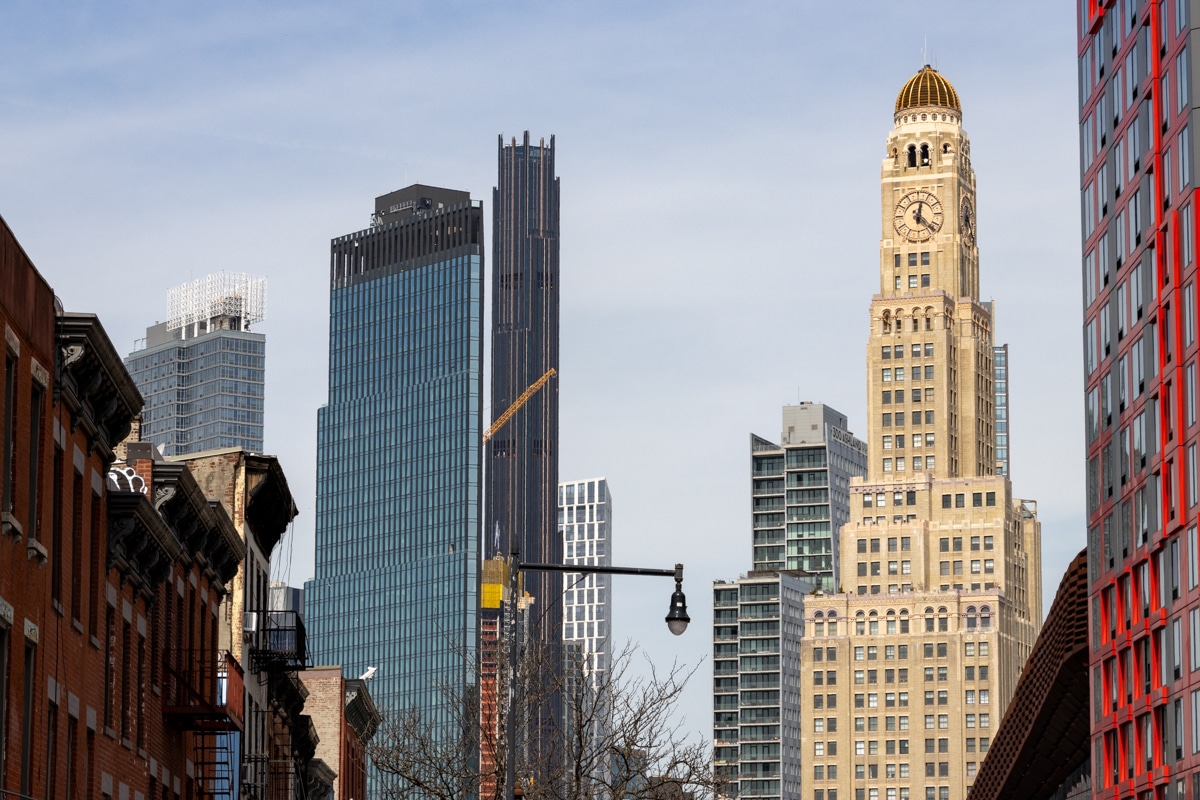Brooklyn Museum Selling Off Brooklyn's Past
The Atlantic has a fascinating article in its June issue about the Brooklyn Museum’s efforts to sell off a collection of important terra cotta decorative carvings salvaged by a donor from construction sites around Brooklyn and Manhattan in 1950s. Ivan Karp, an 83-year-old art dealer who spearheaded the salvage effort and later donated hundreds of…

The Atlantic has a fascinating article in its June issue about the Brooklyn Museum’s efforts to sell off a collection of important terra cotta decorative carvings salvaged by a donor from construction sites around Brooklyn and Manhattan in 1950s. Ivan Karp, an 83-year-old art dealer who spearheaded the salvage effort and later donated hundreds of pieces to the Brooklyn Museum, is now understandably distraught that the museum, which has left many of the pieces exposed to the elements for the past decade, is planning to sell a large part of the collection off through the Harlem salvage dealer Evan Blum of Demolition Depot. This despite a 2007 letter from Arnold Lehman to Karp assuring him that whatever pieces the museum did not use in its redesigned sculpture garden would be returned to Karp, who started a small museum in Charlottesville in 1985 to house these types of objects. Here’s the part of the story when the writer informs Karp of the “deaccessioning” plans:
When I told him that the Brooklyn Museum was planning to auction off so many ornaments through Blum, Karp was astonished. If they’re deaccessioning to sell, that’s very discomfiting, he exclaimed. They should have offered them to me first to buy! As it happened, Karp had phoned Blum, whom he’d known and liked for decades, just the day before. Blum had told him that he was consulting with the museum about the expansion of the sculpture garden, but he did not mention anything about auctions.
Shaking a little, Karp began to leaf through a copy of the binder the museum had sent Blum, which I had brought to the gallery. Good grief! he cried at the sight of a carved brownstone tenement plaque of Abraham Lincoln, which had once been a centerpiece in the sculpture garden. That’s one of the most valuable pieces they have! It’s an historic American figure—how many like that have ever been carved by an anonymous person in homage to Lincoln? This is heartbreaking. A moment later, after peering at a majestic red terra-cotta boy, he said, They’re making serious blunders in many cases.
As he inspected the images, Karp shrank into his chair, until at last, looking very old and defeated, he announced he simply couldn’t look anymore.
Sad.
Update: After the jump, check out the letter to the editor of the Atlantic that was just sent by the Brooklyn Museum.
Ghosts of New York [The Atlantic]
Re: John Freeman Gill article in The Atlantic Monthly on the Brooklyn Museum Collection of Architectural Fragments
The Brooklyn Museum regrets that the author’s comments do not reflect the substantive content of his hours of conversation with Museum staff, or of the extensive and detailed information subsequently provided in response to his questions. The Brooklyn Museum always investigates a range of possibilities for public disposition of works that have entered the deaccession process (the first step in releasing objects from a Museum’s collection), but currently has no agreement with any sales venue regarding the sale of recently deaccessioned architectural fragments. The Museum looks forward to continuing our plans for the full installation of the architectural sculpture collection, in consultation with specialists in the field who in recent years have contributed to the first qualitative assessment of these holdings.
Arnold L. Lehman, Director Brooklyn Museum
Teresa A. Carbone, Andrew W. Mellon Curator of American Art, Brooklyn Museum









Montrose Morris, I do take your point about the historic value of the collection, and I’m not immune to the need to acknowledge and preserve historical culture (my doctoral thesis tread this ground). However, I still maintain that this collection would be best served by an institution that either deals solely or primarily with the decorative arts or the history of New York. Sure lots of museums have departments devoted to the decorative arts, but obviously the BMA doesn’t have the cash to play that game anymore. The BMA has a fine art collection of international importance, and given their limited means, this is rightly the focus of the museum. We are not talking fine art here, we are talking decorative arts. Big difference.
IMBY, yes you’re right about the clock figures. In fact, they’re marked “Gift of Lipsett Demolition Co. and Youngstown Cartage.” Leaves one wondering about progress: items that enlivened our public walkways, discarded in landfills, never to be seen again v. same items now salvaged for their retail value or converted to auctionable commodities, transferred from public access to private collections, never to be seen again. As to Blum and Giuliani: a complex story of many parties involved in irresponsible destruction of architectural treasures.
Vinca, If I recall correctly many of the more spectacular architectural ornaments (I’m thinking of the Clock Figures from Pennsylvania Station)in BK Museum’s garden were dug up out of the Jersey swamp where they were dumped as land fill.
I often toured Irreplaceable Artifacts on my lunch hour… As I recall Blum was building a ground floor door way to his garden in order to open some kind of a cafe when the sidewall collapsed. Before the city finished the job, you could see all those beautiful sparkling chandeliers and stained glass windows through the gaping hole. I don’t believe they let him get anything out before they punished him.
I bought this fantastic 6’cast iron slipper tub right before the end.
I have been around long enough (even working at the Brooklyn Museum as a child) to see it live through many reinventions. The outside of that building was a favorite playground when it consisted of little more than barren hills and the museum’s well-known statue of Indian on horseback. It is ludicrous spin-doctoring for the Museum to close a section (most likely leading to a new café, or the next phase of “growthâ€), and then use that closure as pretext for claiming it no longer has room to house the very items for which items were donated and garden created. I know for sure that many items were obtained in the 70s, one example being the wonderful lion’s heads that used to grace the no-longer-existing technical school at the corners of Mott, Spring and Elizabeth Streets (torn down to be replaced by LIRA housing). There’s no reason for these items to become a springboard for building Blum’s auction business. If you talk to Evan Blum, you’ll get a long story of his own victimhood and persecution at the hands of Giuliani and certain manufacturers of concrete overalls. For those not familiar with the events, and the destruction of thousands of irreplaceable artifacts (the name of his former business), these links will shed some light: http://bit.ly/aBHEcg
http://bit.ly/9QKade
(OK – that was *very* off topic… but it was Wasder’s fault!)
This is a bit off topic, but this is the *only* way Detroit can possibly reemerge as a vibrant city. All of the city’s residents (and with it utilities, safety, services, etc.) have to be concentrated in a center. The sprawl (with no money) is simply not possible.
At least we are not in Detroit….
http://online.wsj.com/article/SB10001424052748703950804575242433435338728.html?mod=rss_US_News
ProfRobert — that’s a great idea. Those items they can’t sell should be installed in the urinals and everyone can pee on them! 😉
Benson — Oh, it was a general redemption. Well, I accept that.
HDL does make a fair point. Since he’s alive and kicking, it would have been a more gentlemanly approach.
As far as the “value” and “preserving the artefactual record” or whatnot… well, that’s the decision of the Museum and it’s board of trustees. There is no “distrust” of the Museum — there are just folks that don’t like the decisions the museum’s administration made. And you feel impotent because you are not able to influence the decision.
Rather than being “distrustful” of the museum, I would suggest making a donation of a couple million dollars and buy your way onto the board. (There are other ways to get onto the board, of course, but you’d probably already be a member if you possessed those qualities.) You can then get the Director and the curatorial team removed and shape the museum how you see fit.